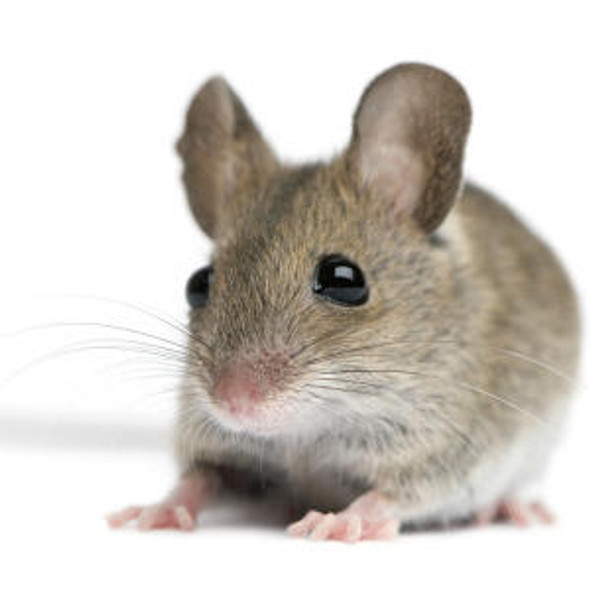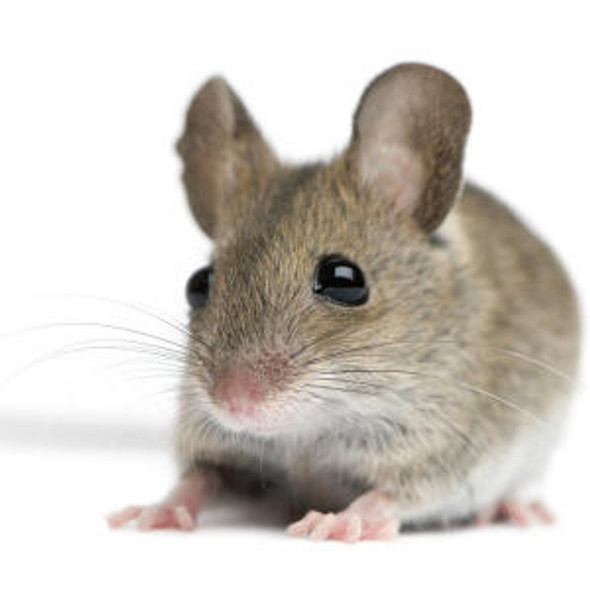Mouse Epigenetics and Nuclear Signaling ELISA Kits
Mouse HNRPA1 (Heterogeneous Nuclear Ribonucleoprotein A1) CLIA Kit (MOES00366)
- SKU:
- MOES00366
- Product Type:
- ELISA Kit
- ELISA Type:
- CLIA Kit
- Size:
- 96 Assays
- Sensitivity:
- 9.38pg/mL
- Range:
- 15.63-1000pg/mL
- ELISA Type:
- Sandwich
- Reactivity:
- Mouse
- Sample Type:
- Serum, plasma and other biological fluids
- Research Area:
- Epigenetics and Nuclear Signaling
Description
| Assay type: | Sandwich |
| Format: | 96T |
| Assay time: | 4.5h |
| Reactivity: | Mouse |
| Detection method: | Chemiluminescence |
| Detection range: | 15.63-1000 pg/mL |
| Sensitivity: | 9.38 pg/mL |
| Sample volume: | 100µL |
| Sample type: | Serum, plasma and other biological fluids |
| Repeatability: | CV < 15% |
| Specificity: | This kit recognizes Mouse HNRPA1 in samples. No significant cross-reactivity or interference between Mouse HNRPA1 and analogues was observed. |
This kit uses Sandwich-CLIA as the method. The micro CLIA plate provided in this kit has been pre-coated with an antibody specific to Mouse HNRPA1. Standards or samples are added to the appropriate micro CLIA plate wells and combined with the specific antibody. Then a biotinylated detection antibody specific for Mouse HNRPA1 and Avidin-Horseradish Peroxidase (HRP) conjugate are added to each micro plate well successively and incubated. Free components are washed away. The substrate solution is added to each well. Only those wells that contain Mouse HNRPA1, biotinylated detection antibody and Avidin-HRP conjugate will appear fluorescence. The Relative light unit (RLU) value is measured spectrophotometrically by the Chemiluminescence immunoassay analyzer. The RLU value is positively associated with the concentration of Mouse HNRPA1. The concentration of Mouse HNRPA1 in the samples can be calculated by comparing the RLU of the samples to the standard curve.
| UniProt Protein Function: | hnRNP A1: Involved in the packaging of pre-mRNA into hnRNP particles, transport of poly(A) mRNA from the nucleus to the cytoplasm and may modulate splice site selection. May play a role in HCV RNA replication. Identified in the spliceosome C complex. Identified in a mRNP granule complex, at least composed of ACTB, ACTN4, DHX9, ERG, HNRNPA1, HNRNPA2B1, HNRNPAB, HNRNPD, HNRNPL, HNRNPR, HNRNPU, HSPA1, HSPA8, IGF2BP1, ILF2, ILF3, NCBP1, NCL, PABPC1, PABPC4, PABPN1, RPLP0, RPS3, RPS3A, RPS4X, RPS8, RPS9, SYNCRIP, TROVE2, YBX1 and untranslated mRNAs. Interacts with SEPT6. Interacts with HCV NS5B and with the 5'-UTR and 3'-UTR of HCV RNA. 3 isoforms of the human protein are produced by alternative splicing. |
| UniProt Protein Details: | Protein type:Nuclear export; RNA splicing; RNA-binding; Spliceosome Chromosomal Location of Human Ortholog: 15 F3|15 58. 58 cM Cellular Component: cytoplasm; intracellular ribonucleoprotein complex; nucleoplasm; nucleus; spliceosomal complex Molecular Function:nucleic acid binding; RNA binding Biological Process: alternative mRNA splicing, via spliceosome; mRNA processing; mRNA transport; RNA splicing; transport |
| UniProt Code: | P49312 |
| NCBI GenInfo Identifier: | 6754220 |
| NCBI Gene ID: | 15382 |
| NCBI Accession: | NP_034577. 1 |
| UniProt Secondary Accession: | P49312,P97312, Q3V269, |
| UniProt Related Accession: | P49312 |
| Molecular Weight: | 28,898 Da |
| NCBI Full Name: | heterogeneous nuclear ribonucleoprotein A1 isoform a |
| NCBI Synonym Full Names: | heterogeneous nuclear ribonucleoprotein A1 |
| NCBI Official Symbol: | Hnrnpa1 |
| NCBI Official Synonym Symbols: | Hdp; HDP-1; Hnrpa1; hnRNP A1; hnrnp-A1 |
| NCBI Protein Information: | heterogeneous nuclear ribonucleoprotein A1 |
| UniProt Protein Name: | Heterogeneous nuclear ribonucleoprotein A1 |
| UniProt Synonym Protein Names: | HDP-1; Helix-destabilizing protein; Single-strand-binding protein; Topoisomerase-inhibitor suppressed; hnRNP core protein A1 |
| Protein Family: | Heterogeneous nuclear ribonucleoprotein |
| UniProt Gene Name: | Hnrnpa1 |
As the RLU values of the standard curve may vary according to the conditions of the actual assay performance (e. g. operator, pipetting technique, washing technique or temperature effects), the operator should establish a standard curve for each test. Typical standard curve and data is provided below for reference only.
| Concentration (pg/mL) | RLU | Average | Corrected |
| 1000 | 49774 57576 | 53675 | 53650 |
| 500 | 20469 24509 | 22489 | 22464 |
| 250 | 10260 10162 | 10211 | 10186 |
| 125 | 4651 5151 | 4901 | 4876 |
| 62.5 | 2511 2395 | 2453 | 2428 |
| 31.25 | 1383 1179 | 1281 | 1256 |
| 15.63 | 679 737 | 708 | 683 |
| 0 | 24 26 | 25 | -- |
Precision
Intra-assay Precision (Precision within an assay): 3 samples with low, mid range and high level Mouse HNRPA1 were tested 20 times on one plate, respectively.
Inter-assay Precision (Precision between assays): 3 samples with low, mid range and high level Mouse HNRPA1 were tested on 3 different plates, 20 replicates in each plate.
| Intra-assay Precision | Inter-assay Precision | |||||
| Sample | 1 | 2 | 3 | 1 | 2 | 3 |
| n | 20 | 20 | 20 | 20 | 20 | 20 |
| Mean (pg/mL) | 51.21 | 133.18 | 443.87 | 52.57 | 122.83 | 401.74 |
| Standard deviation | 6.41 | 9.34 | 37.42 | 4.67 | 9.89 | 25.35 |
| C V (%) | 12.52 | 7.01 | 8.43 | 8.88 | 8.05 | 6.31 |
Recovery
The recovery of Mouse HNRPA1 spiked at three different levels in samples throughout the range of the assay was evaluated in various matrices.
| Sample Type | Range (%) | Average Recovery (%) |
| Serum (n=5) | 85-97 | 90 |
| EDTA plasma (n=5) | 86-102 | 93 |
| Cell culture media (n=5) | 95-109 | 101 |
Linearity
Samples were spiked with high concentrations of Mouse HNRPA1 and diluted with Reference Standard & Sample Diluent to produce samples with values within the range of the assay.
| Serum (n=5) | EDTA plasma (n=5) | Cell culture media (n=5) | ||
| 1:2 | Range (%) | 100-116 | 96-110 | 97-111 |
| Average (%) | 107 | 102 | 105 | |
| 1:4 | Range (%) | 98-112 | 101-115 | 89-102 |
| Average (%) | 103 | 109 | 94 | |
| 1:8 | Range (%) | 98-114 | 93-105 | 89-100 |
| Average (%) | 105 | 98 | 94 | |
| 1:16 | Range (%) | 103-119 | 100-115 | 86-96 |
| Average (%) | 110 | 106 | 91 |
An unopened kit can be stored at 4°C for 1 month. If the kit is not used within 1 month, store the items separately according to the following conditions once the kit is received.
| Item | Specifications | Storage |
| Micro CLIA Plate(Dismountable) | 8 wells ×12 strips | -20°C, 6 months |
| Reference Standard | 2 vials | |
| Concentrated Biotinylated Detection Ab (100×) | 1 vial, 120 µL | |
| Concentrated HRP Conjugate (100×) | 1 vial, 120 µL | -20°C(shading light), 6 months |
| Reference Standard & Sample Diluent | 1 vial, 20 mL | 4°C, 6 months |
| Biotinylated Detection Ab Diluent | 1 vial, 14 mL | |
| HRP Conjugate Diluent | 1 vial, 14 mL | |
| Concentrated Wash Buffer (25×) | 1 vial, 30 mL | |
| Substrate Reagent A | 1 vial, 5 mL | 4°C (shading light) |
| Substrate Reagent B | 1 vial, 5 mL | 4°C (shading light) |
| Plate Sealer | 5 pieces | |
| Product Description | 1 copy | |
| Certificate of Analysis | 1 copy |
- Set standard, test sample and control (zero) wells on the pre-coated plate and record theirpositions. It is recommended to measure each standard and sample in duplicate. Note: addall solutions to the bottom of the plate wells while avoiding contact with the well walls. Ensuresolutions do not foam when adding to the wells.
- Aliquot 100µl of standard solutions into the standard wells.
- Add 100µl of Sample / Standard dilution buffer into the control (zero) well.
- Add 100µl of properly diluted sample (serum, plasma, tissue homogenates and otherbiological fluids. ) into test sample wells.
- Cover the plate with the sealer provided in the kit and incubate for 90 min at 37°C.
- Aspirate the liquid from each well, do not wash. Immediately add 100µL of BiotinylatedDetection Ab working solution to each well. Cover the plate with a plate seal and gently mix. Incubate for 1 hour at 37°C.
- Aspirate or decant the solution from the plate and add 350µL of wash buffer to each welland incubate for 1-2 minutes at room temperature. Aspirate the solution from each well andclap the plate on absorbent filter paper to dry. Repeat this process 3 times. Note: a microplatewasher can be used in this step and other wash steps.
- Add 100µL of HRP Conjugate working solution to each well. Cover with a plate seal andincubate for 30 min at 37°C.
- Aspirate or decant the solution from each well. Repeat the wash process for five times asconducted in step 7.
- Add 100µL of Substrate mixture solution to each well. Cover with a new plate seal andincubate for no more than 5 min at 37°C. Protect the plate from light.
- Determine the RLU value of each well immediately.






